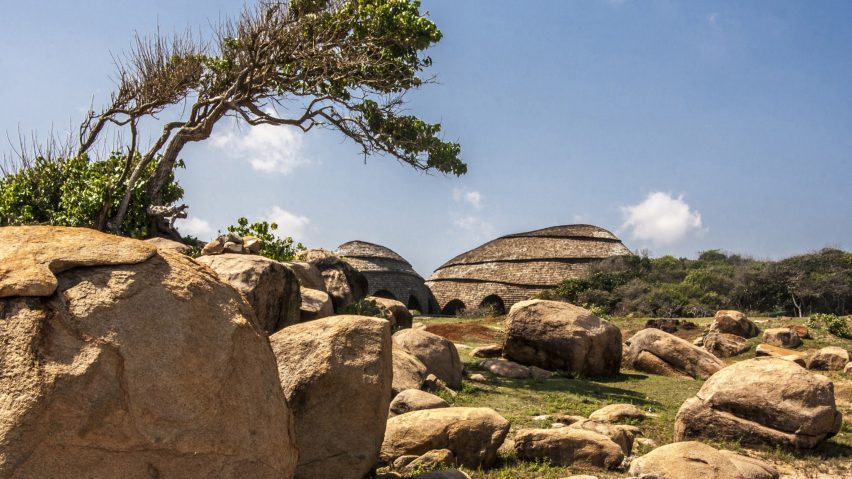
Nomadic Resorts creates safari camp village overlooking the Indian Ocean
The Wild Coast Tented Lodge near the Yala National Park in the south of Sri Lanka is a series of dwellings designed to mimic rocky outcrops scattered across the local landscape.
Hospitality studio Nomadic Resorts worked with interior designer Bo Reudler Studio to create the 36-tent safari camp, which sits on the Indian Ocean surrounded by woodland.
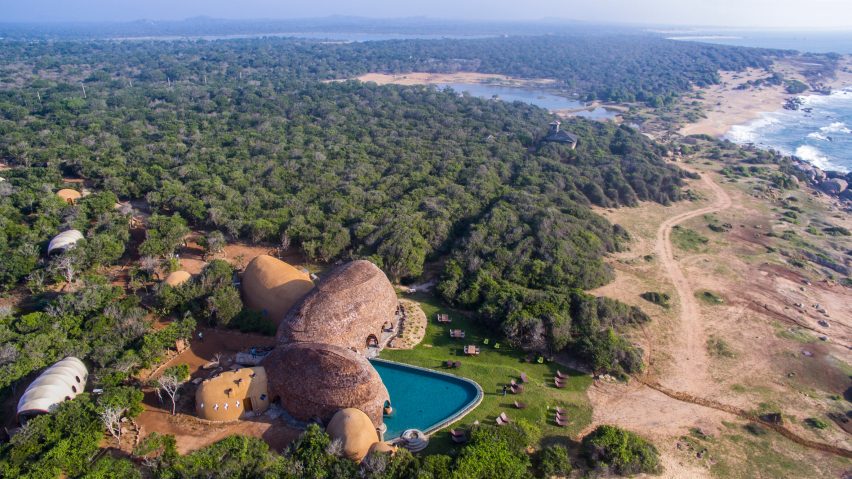
The camp's waterfront bar, restaurant and library are enclosed within two dome-shaped structures clad in reclaimed teak shingles, which were designed to imitate the local landscape.
"At the site you can find massive boulders along the coastline," explained Olav Bruin, creative director at Nomadic Resorts.
"So when we started sketching and brainstorming the same evening after our visit, we felt that the best approach would be to design buildings that would become part of the natural surroundings, so we shaped them like a cluster of intersecting boulders."
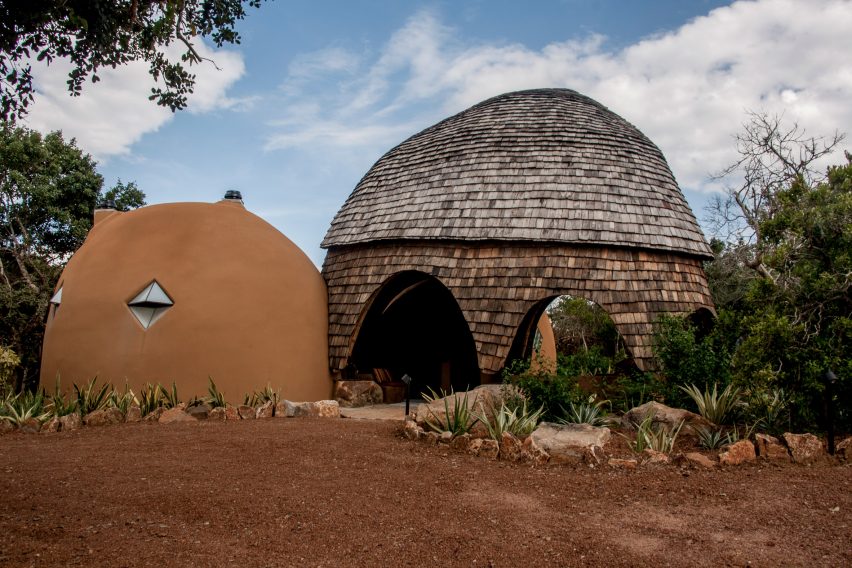
"At a more detailed level it was important to us that the buildings would weather gracefully so we used reclaimed teak shakes with a rough surface," he told Dezeen.
"These will turn grey over time with different tones, which will make the buildings look even more like the surrounding rock surfaces."
The entire development, which has been longlisted in this year's Dezeen Awards, was designed to integrate with the site, with no fence enclosing the park, sustainable materials used for the main structures and furniture, and the accommodation built on stilts.
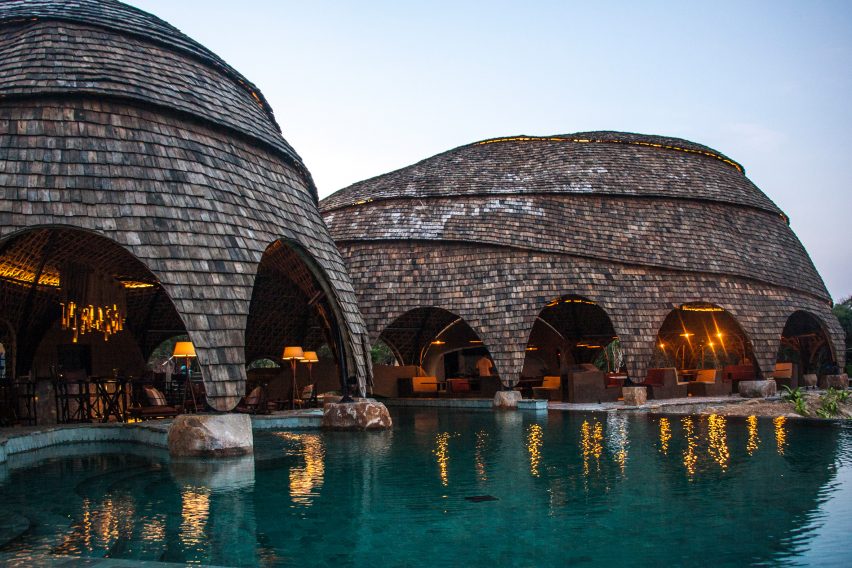
"The first decision was to not build any fencing around the property and build in a relatively low density, so the wildlife could roam uninterrupted across the site," explained Bruin.
"The next important element is that we added large ponds which are fed with the grey water of the surrounding cluster of tented suites," he continued.
"The flora of the site was actually quite monotonous with only a few bush and tree species so the ponds gave us the chance to increase the biodiversity of the site with other species found in the area."
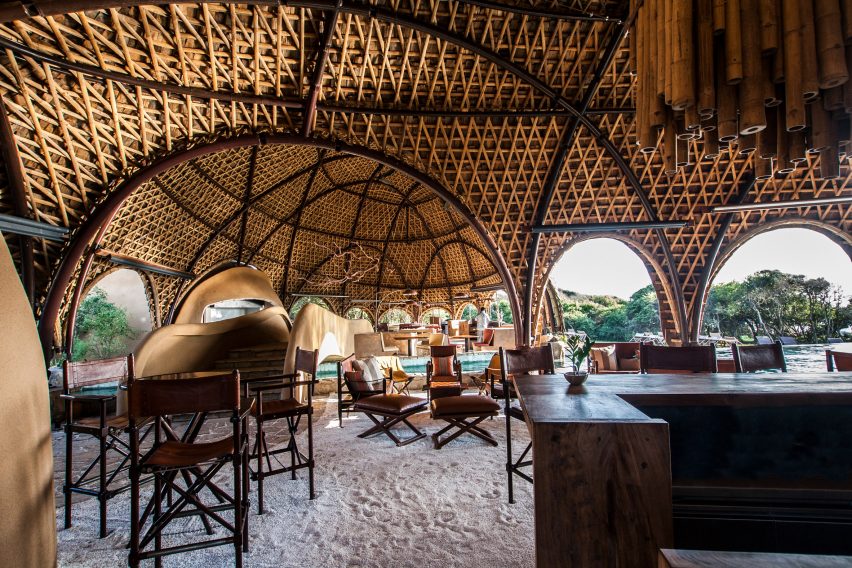
The domed buildings were built from bamboo – a fast growing plant that was chosen for its sustainable credentials.
As the studio couldn't find sufficiently skilled workers it set up a construction company to carry out the building, which trained 80 people from the neighbouring fishermen's village.
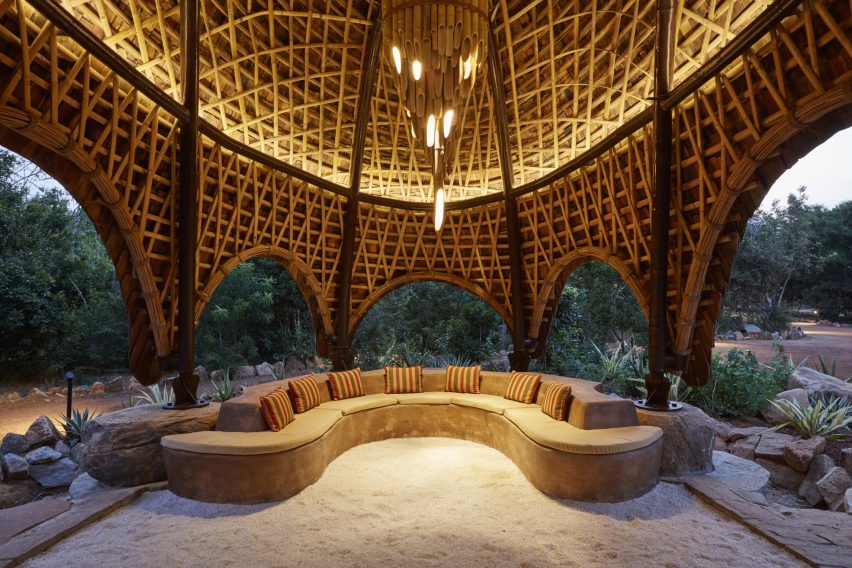
"Since our CEO Louis Thompson was based in Sri Lanka at that time and the skills for the more complicated elements of the project like the bamboo and tensile membrane structures were not easily available, we decided to set up a construction company to build the front of house facilities and accommodation units ourselves," explained Bruin.
"This resulted in a very inclusive construction process and collaboration between local and international craftsmen combining vernacular techniques with contemporary architecture," he continued.
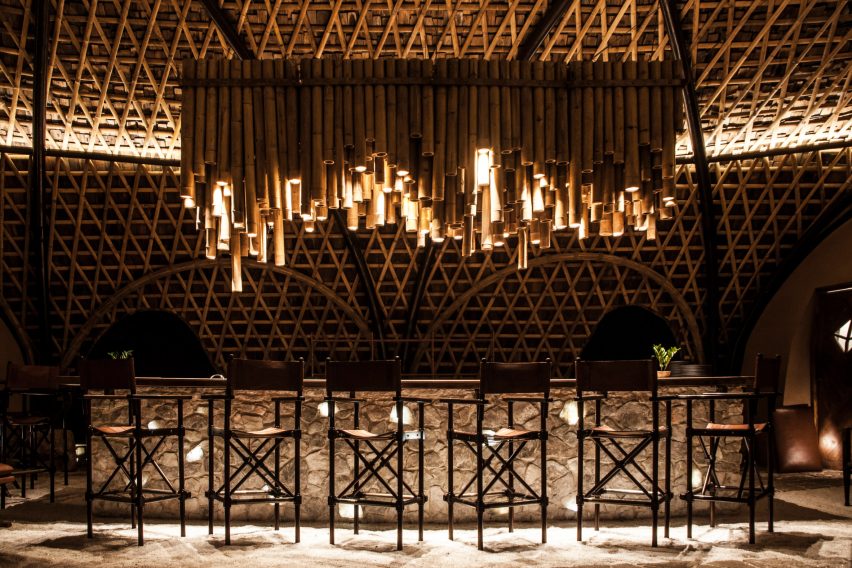
Within the bamboo structures seating has been made from a combination of elephant dung and clay.
"Excavated stone and locally quarried quartz are used widely throughout, and residue clay from the gravel-sieving process was mixed with elephant dung – an abundant resource – to create the restaurant and welcome-area mud-brick seating," said Bruin.
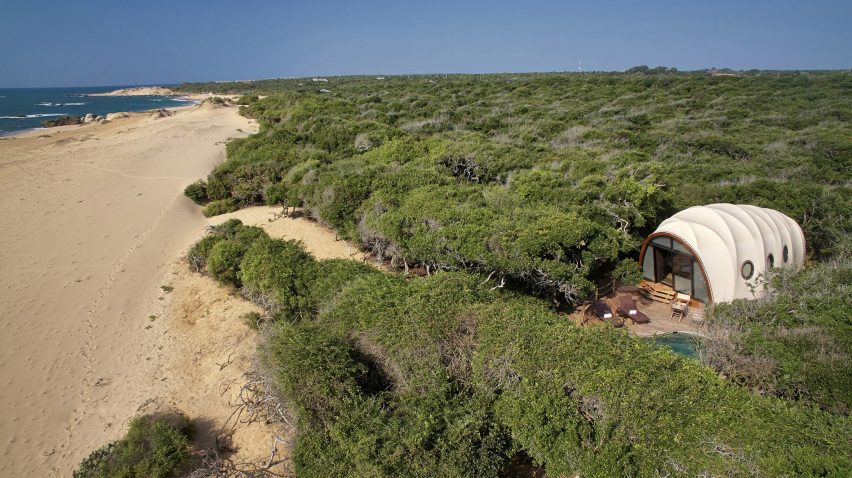
Alongside the main buildings, the studio placed 36 lightweight structures within the forest that each act as a guest room.
These buildings were prefabricated off site to minimise the impact during construction, and raised on stilts to reduce the impact on the landscape.
They are designed so they could be disassembled and leave only a minimal impact on the site.
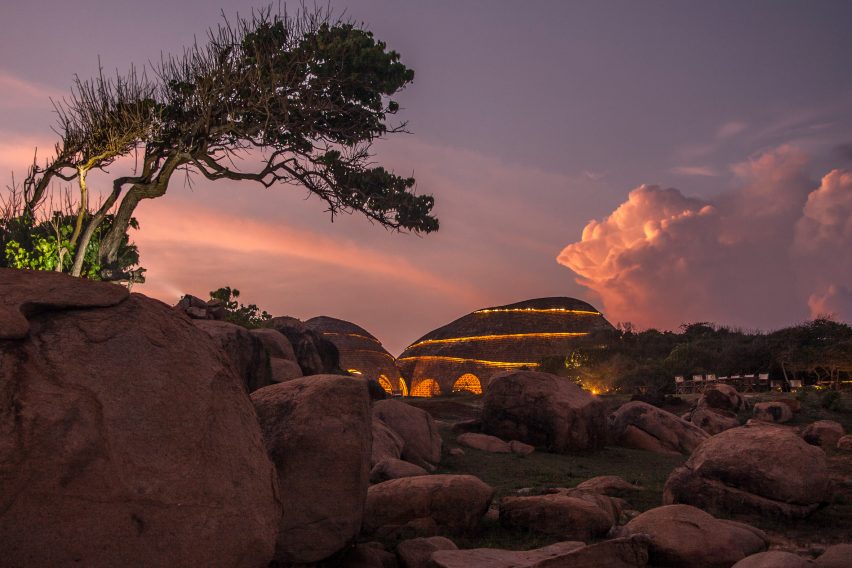
The safari camp also has solar panels installed on the roofs of some back-of-house buildings that produce around 40 per cent of the camp's energy, while waste water is collected and used for watering, whilst food waste is used to produce biogas.
Numerous architects are designing choosing bamboo as a sustainable building material. Earlier this year Vo Trong Nghia Architects built an island resort from they material in Vietnam, while CO-LAB Design Office made a bamboo yoga pavilion in Mexico.
Photography is by Marc Hernandez Folguera, unless stated.